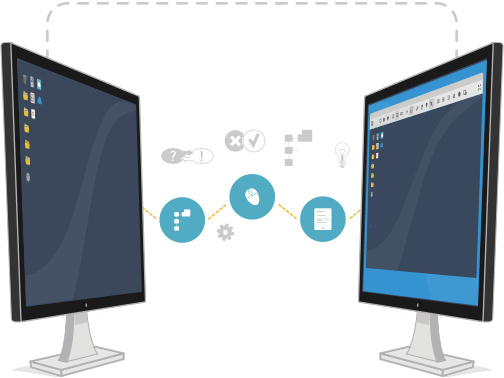After COVID-19, People have adopted different approaches to deal with daily activities that include business entrepreneurship endeavors.
COVID-19 has changed the way people do things in all aspects of life and it's no different when it comes to conducting business.
The thing is, even though many of us have already found ways to transition to "the new normal" and adapted to a work-from-home setup, there's still a big risk when it comes to private, personal, or confidential information security.
Many businesses are now using Remote Desktop Protocol to access their systems and servers remotely. This allows IT departments to efficiently manage Windows systems from afar. However, poorly secured or unprotected remote connect endpoints pose risks for bad actors breach.
What is RDP?
Created by Microsoft, remote desktop protocol is a network communications protocol that enables users to connect to another computer remotely.
Remote desktop is the ability to connect with and use a faraway desktop computer from a different location. Users who utilize remote connect are able to access their desktop, open and edit files, as well as use applications as if they were actually sitting at their desktop computer. Employees typically use remote desktop software to gain access to their work computers, when they are traveling or, in today’s climate, working from home.

It's important to note, however, that remote connect access is different from cloud computing. Though both allow employees to work remotely, users access files and applications that are stored in the cloud (or in cloud servers specifically) in cloud computing. Users gain access to their physical desktop computer during utilising remote desktop software; hence, they can only use files and applications saved locally on that specific desktop. Cloud computing is actually easier to use and more efficient to implement for remote workforces, but many companies have not migrated to the cloud yet, making remote connect access a great alternative choice.
How does it work?
RDP transmits the monitor from the remote server to the user, and keyboard and mouse inputs from the user to the remote server. Due to highly opposite communications between the user and the server great amount of data transfers from the server to the user, and not much from the user to the server (the graphical screen information consists of much more data than keyboard and mouse inputs).
RDP depends on additional protocols to establish remote connect between the two devices and to transfer the data.
Using RDP is somewhat like playing with a remote-controlled drone or toy car — the user presses buttons and remotely steers the drone or car, and their commands are transmitted to the vehicle.
Are there benefits to using RDP?
There are several benefits to using remote desktop protocol, which makes it a great choice for organizations of all sizes. Here are a few:
Increases a business' productivity
Remote connect access enables employees globally access their computers whenever they are. This kind of connection ultimately increases productivity and helps mitigate common issues that might arise when employees are working remotely, such as lack of enough computing power, or not having access to files an employee needs.
Provides extra savings
Using RDP (Remote Device Protocol) means your organization can adopt a BYOD (Bring Your Own Device) policy for employees who are away from the office. This ultimately allows you to save more money that would have spended on additional wok devices, like laptops or cell phones. Workers can simply use their home device to connect to their work computer.
Offers access control
Remote desktop protocol lets you access your desktop data from anywhere in the world, offering you better and more efficient control over valuable data. You no longer have to ask employees to copy files to flash drives, send them over emails, or other, possibly insecure ways of sharing data outside your network.
How to securely use RDP?
As mentioned above, poorly secured or unprotected RDP endpoints might have an adverse effect on your organization than do it good. So the question is, how do you provide a secure remote connect access across your network? Read on to find out how.
You can use the Microsoft RDP app to connect to a remote computer or virtual apps and desktops. By default, this app provides access to your computer on the local network. To access it from anywhere, you need to set up port forwarding or use a VPN, such as OpenVPN Access Server.
For employees to securely use RDP access at home, the use of a VPN is crucial. Users will connect with a VPN client, which then connects them to the local network.
None of your remote desktop connections have to be forwarded or opened up to the Public Internet. Instead, the VPN connection encrypts the traffic and grants limited access to authorized employees' computers at the office.
ITarian's remote desktop software lets you manage network endpoints, computers, and the entire IT infrastructure remotely from a single dashboard. It delivers high-quality capabilities to meet customer’s needs.